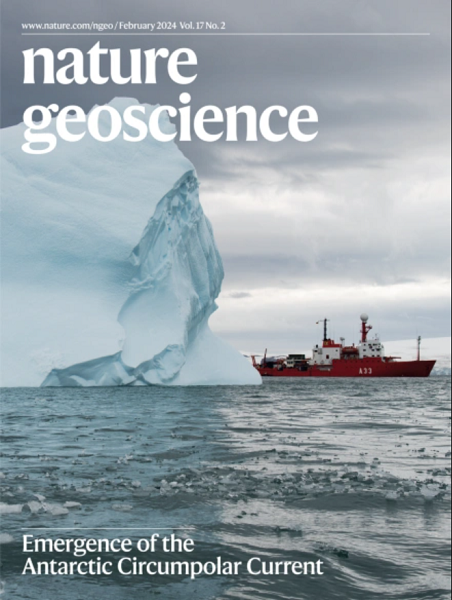Mediterranean summer marine heatwaves triggered by weaker winds under subtropical ridges
IF 16.1
1区 地球科学
Q1 GEOSCIENCES, MULTIDISCIPLINARY
引用次数: 0
Abstract
Marine heatwaves, extended periods of elevated sea surface temperature, impact society and ecosystems, and deeper understanding of their drivers is needed to predict and mitigate adverse effects. These events can be particularly severe in the Mediterranean Sea during the summer although the factors that control their occurrence and duration are not fully known. Here we use a comprehensive multi-decadal macroevent dataset and a cluster analysis to investigate the atmospheric dynamics preceding the largest summer marine heatwaves in the Mediterranean Sea. Our study identifies the favourable conditions leading up to marine heatwave peaks and reveals that their main synoptic cause in the Mediterranean Sea is the combined effect of persistent subtropical anticyclonic ridges and associated weakening of prevailing wind systems. When persistent subtropical ridges are established over the region, the resulting decrease in wind speeds causes a substantial reduction in latent heat loss to the atmosphere, which accounts for over 70% of the total heat flux in affected regions. This reduction, combined with a moderate increase in short-wave radiation, generates and intensifies marine heatwaves. This synergistic relationship represents a key mechanism that is critical for skilfully predicting such atmospheric circulation patterns and realistically simulating their impacts on the marine environment. Reduced winds below subtropical ridges are a key factor in the initiation of summer marine heatwaves in the Mediterranean Sea, according to a statistical analysis of large marine heatwave events.


地中海夏季海洋热浪是由亚热带脊下的弱风引发的
海洋热浪,海面温度持续升高,影响社会和生态系统,需要更深入地了解其驱动因素,以预测和减轻不利影响。这些事件在地中海的夏季可能特别严重,尽管控制其发生和持续时间的因素尚不完全清楚。在这里,我们使用一个综合的多年代际大事件数据集和聚类分析来研究地中海夏季最大海洋热浪之前的大气动力学。我们的研究确定了导致海洋热浪峰值的有利条件,并揭示了其在地中海的主要天气原因是持续的副热带反气旋脊和相关的盛行风系统减弱的综合作用。当持续的副热带高压脊在该地区上空形成时,风速的降低导致大气潜热损失的大幅减少,潜热损失占受影响地区总热通量的70%以上。这种减少,加上短波辐射的适度增加,产生并加剧了海洋热浪。这种协同关系代表了一种关键机制,对于熟练地预测这种大气环流模式和现实地模拟其对海洋环境的影响至关重要。
本文章由计算机程序翻译,如有差异,请以英文原文为准。
求助全文
约1分钟内获得全文
求助全文
来源期刊

Nature Geoscience
地学-地球科学综合
CiteScore
26.70
自引率
1.60%
发文量
187
审稿时长
3.3 months
期刊介绍:
Nature Geoscience is a monthly interdisciplinary journal that gathers top-tier research spanning Earth Sciences and related fields.
The journal covers all geoscience disciplines, including fieldwork, modeling, and theoretical studies.
Topics include atmospheric science, biogeochemistry, climate science, geobiology, geochemistry, geoinformatics, remote sensing, geology, geomagnetism, paleomagnetism, geomorphology, geophysics, glaciology, hydrology, limnology, mineralogy, oceanography, paleontology, paleoclimatology, paleoceanography, petrology, planetary science, seismology, space physics, tectonics, and volcanology.
Nature Geoscience upholds its commitment to publishing significant, high-quality Earth Sciences research through fair, rapid, and rigorous peer review, overseen by a team of full-time professional editors.
 求助内容:
求助内容: 应助结果提醒方式:
应助结果提醒方式:


